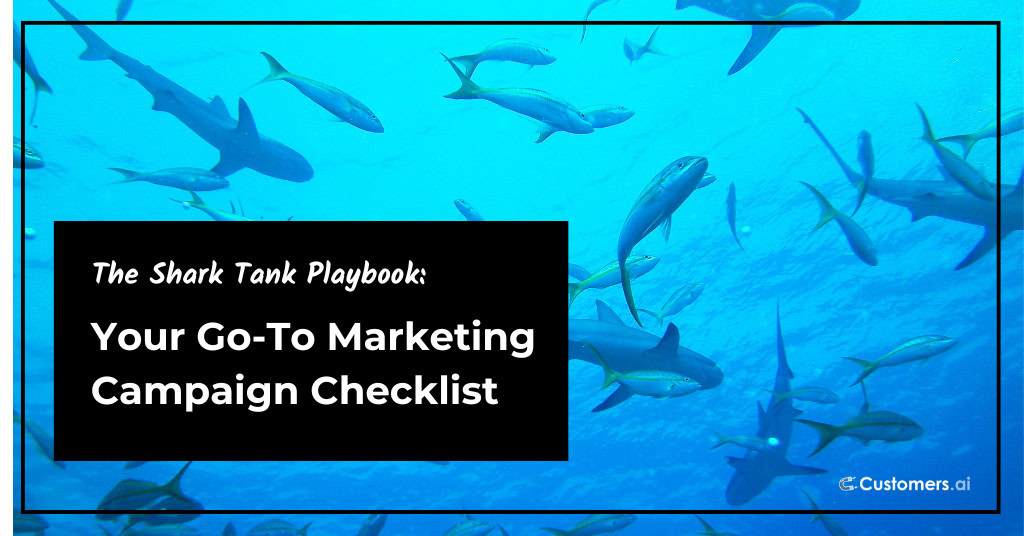Recently, one of our clients landed the opportunity of a lifetime – they were featured on Shark Tank!
But before the episode aired, they made a smart move: they set up the Customers.ai Website Visitor ID X-Ray Pixel to capture and identify everyone visiting their website after the show.
This simple step ensured they wouldn’t miss out on the surge of interest generated by their appearance. It was a brilliant strategy to maximize the impact of such a major promotional moment!
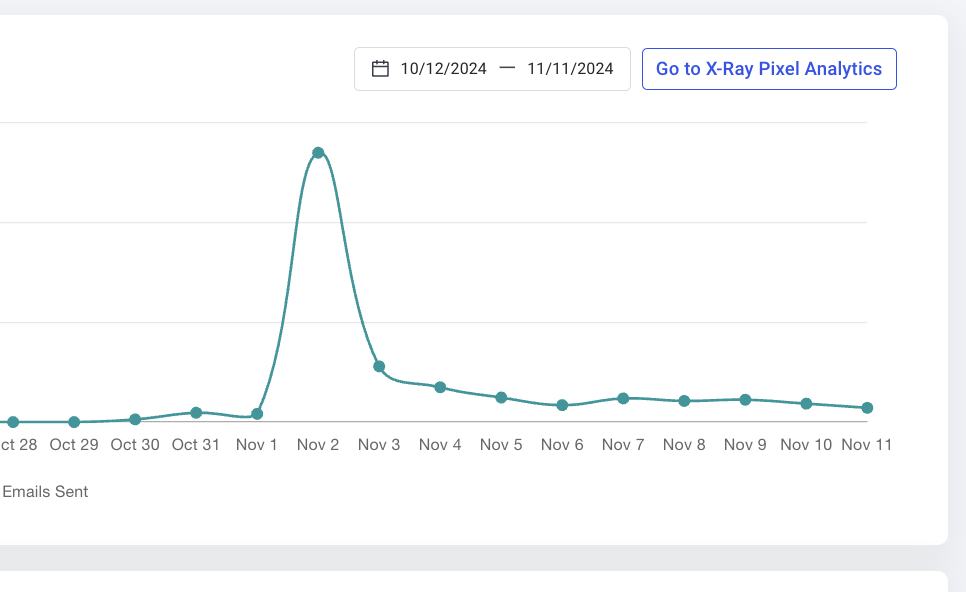
Their preparation got us thinking: what are the must-do steps marketing teams need to take before launching a campaign, whether it’s a Shark Tank debut, a product launch, or a big promotional push?
Turns out, a lot of campaigns fall short because crucial details get overlooked. In fact, 50% of marketers cite poor planning as the biggest reason campaigns fail. On the flip side, businesses that document their marketing processes are 313% more likely to succeed.
That’s why we created this Marketing Campaign Checklist, your ultimate guide to nailing every detail, from planning to post-launch optimization.
With 15 actionable steps, you’ll have a roadmap to ensure your campaign is not only smooth but wildly successful.
Ready to dive in and make your next campaign your best yet? Let’s get started!
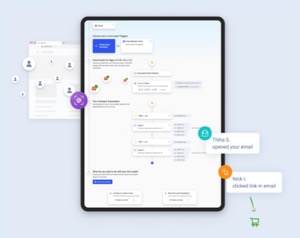
See Who Is On Your Site Right Now!
Get names, emails, phone numbers & more.
Try it Free, No Credit Card Required
1. Dream Big, Start Smart: Define Your Campaign Goals
Before you start creating, designing, or promoting, you need to answer one simple question: What does success look like for this campaign?
Without clear goals, it’s impossible to know if your campaign is truly effective or just busywork.
Think of your goals as your campaign’s North Star. They keep you focused and aligned from start to finish.
Setting clear, measurable goals is non-negotiable because vague objectives like “improve brand awareness” or “get more traffic” don’t cut it.
Instead, aim for goals you can track and quantify. For example:
- Increase website traffic by 30% in 30 days.
- Generate 500 qualified leads in two months.
- Achieve a 5% click-through rate (CTR) on paid ads.
Once you’ve defined your goals, it’s time to pair them with the right Key Performance Indicators (KPIs).
These metrics will help you measure progress and tweak your strategy as needed. Some common KPIs to track include:
- Click-Through Rate (CTR): Measures how many people click on your ads or links.
- Cost Per Acquisition (CPA): Tells you how much it costs to convert a lead or customer.
- Social Media Engagement: Tracks likes, shares, and comments on your posts.
For example, if your goal is to generate leads, KPIs like form submissions or email sign-ups will give you a clear picture of success. If your focus is increasing traffic, then website sessions or referral sources are your go-to metrics.
Start with the end in mind, and you’ll have a roadmap for every step of your campaign.
2. Crack the Code: Understand Your Audience Deeply
Your audience isn’t just a faceless group of people. They’re the heart of your campaign (and your business!).
The better you understand who they are, what they care about, and how they behave, the better you can create messages that resonate.
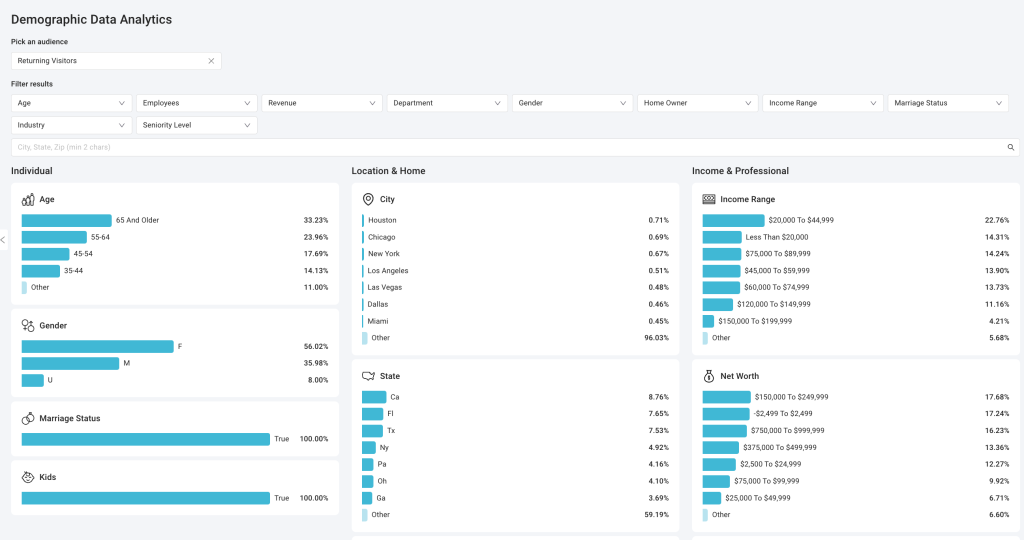
That’s where audience segmentation comes in. Start by breaking your audience into segments based on:
- Demographics: Age, gender, income, location.
- Buying Habits: How they shop, what they purchase, and how often they buy.
- Interests and Preferences: Hobbies, values, and the type of content they engage with.
For example, if you’re targeting small business owners, your campaign might highlight tools that save time or improve efficiency. If your audience is Gen Z, you might focus on bold visuals and short-form videos on platforms like TikTok or Instagram.
To crack the code on your audience, use tools like:
- Google Analytics: Analyze website traffic and behavior patterns.
- Facebook Audience Insights: Get detailed data about your followers’ interests and activities.
- Survey Platforms (e.g., Typeform or SurveyMonkey): Ask your audience directly about their preferences and challenges.
- Customers.ai Visitor ID Pixel: Get detailed information about your website visitors.
Once you have this data, use it to tailor your campaign message. Speak their language, solve their specific pain points, and show how your product or service fits into their lives.
For instance:
- A campaign targeting fitness enthusiasts might use messaging like, “Stay on track with workout plans designed for your busy schedule.”
- A B2B campaign for SaaS might focus on, “Save hours every week with automation tools built for small teams.”
Understanding your audience isn’t just a step in the process. It’s the foundation of a campaign that feels personal, relevant, and can’t be ignored.
3. Spy on the Enemy: Perform a Competitive Analysis
If you want your campaign to stand out, you need to know what you’re up against. That’s where your competitive analytics analysis comes in.
Start by identifying your top competitors. These might be brands in your industry or businesses targeting the same audience.
Once you have your list, use tools like:
- SEMrush: Analyze competitors’ SEO strategies, paid ad campaigns, and top-performing content.
- SimilarWeb: Get insights into their website traffic sources, audience demographics, and referral strategies.
- BuzzSumo: Discover their most shared content and understand what resonates with their audience.
As you dig into the data, look for gaps in their campaigns. For example:
- Are they neglecting a specific platform where your audience spends time?
- Is their messaging outdated or missing key pain points?
- Are their ads driving traffic to generic landing pages instead of tailored ones?
If a competitor focuses heavily on Facebook ads but ignores TikTok, you can capitalize by targeting the younger demographic with short-form, high-impact videos. Or, if their content is overly technical, you could simplify the message and make it more relatable.
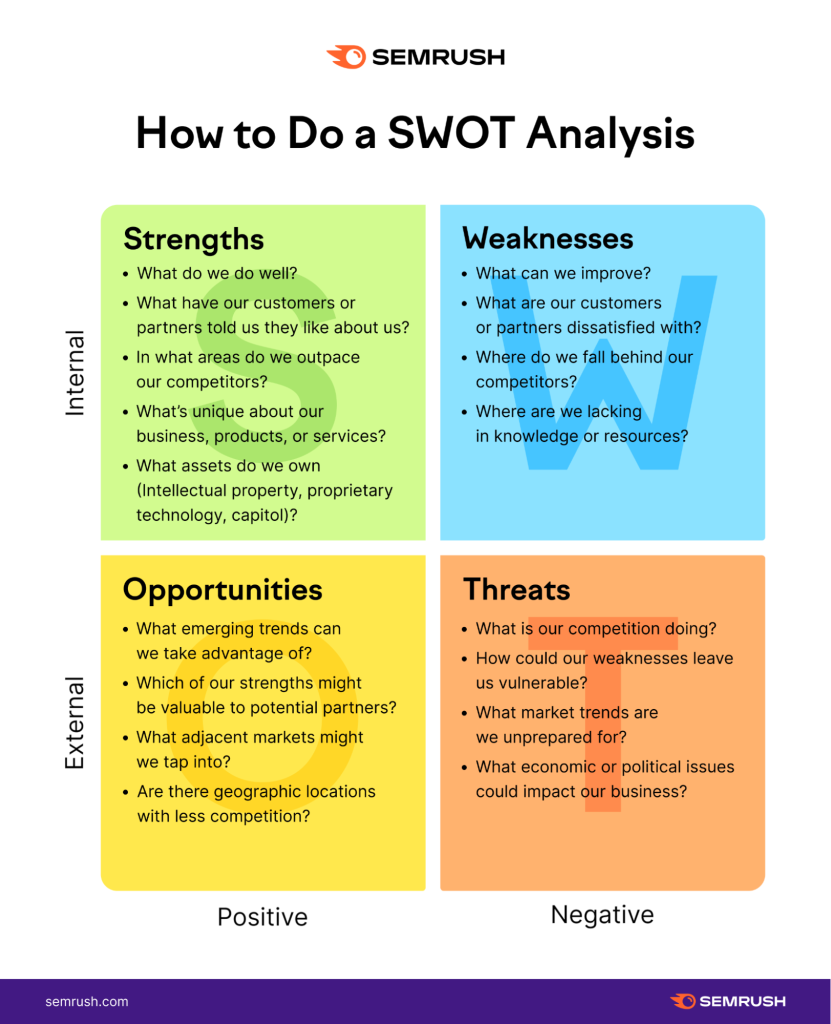
Include competitive analysis in your pre-launch marketing checklist to ensure your campaign is both relevant and differentiated. By addressing gaps and avoiding the pitfalls you spot in competitors’ strategies, you’ll position your brand as the better, smarter choice.
4. Budget Like a Boss: Plan Every Dollar
A killer marketing campaign is only as good as its budget. Running out of funds halfway through or discovering unexpected costs can derail even the most creative strategy.
That’s why planning every dollar upfront is essential to ensuring your campaign runs smoothly and delivers results.
Start by breaking your budget into categories:
- Advertising Spend: Allocate funds for paid ads on platforms like Google, Facebook, or Instagram.
- Content Creation: Cover costs for blog posts, videos, graphics, or any other creative assets.
- Creative Production: Include expenses for tools like Canva or freelance designers and editors.
- Tracking Tools: Don’t forget tools like Google Analytics, email marketing platforms, or CRM software.
Be sure to account for hidden costs that often catch marketers off guard, such as:
- A/B Testing: Running multiple versions of ads or emails to optimize performance.
- Rush Fees: Extra costs for expedited content or production timelines.
- Freelancer Rates: Fees for writers, designers, or developers hired for specific tasks.
Once you’ve outlined your spending, it’s time to create a budget-tracking checklist.
This can be as simple as a Google Sheet or as advanced as using budgeting tools like Monday.com or QuickBooks.
Track every expense in real time, so you can reallocate funds if needed. For example, if a particular ad is performing better than others, you can shift budget toward scaling that effort.
5. Play to Win: Select the Right Marketing Channels
Choosing the right marketing channels can make or break your campaign. With countless options available, from organic efforts to paid ads, selecting the channels that best align with your audience and goals is essential for maximizing impact.
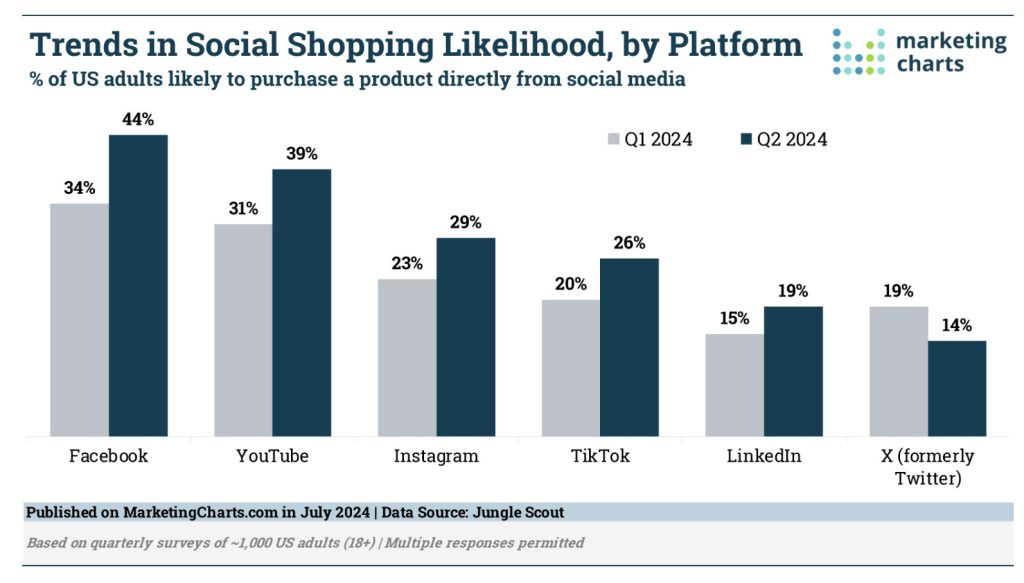
The key is knowing where your audience spends their time and how they prefer to engage with content. Let’s break it down:
- Organic Channels: Social media, blog posts, email newsletters, and SEO-driven content. These are great for building long-term relationships and generating consistent traffic without ongoing costs.
- Paid Channels: PPC ads, influencer partnerships, and sponsored content. These work best when you need immediate results, like driving traffic or increasing brand awareness for a time-sensitive campaign.
The right mix depends on your audience and goals. For example:
- If you’re targeting Gen Z, prioritize TikTok and Instagram Reels, where short-form video dominates.
- For B2B audiences, focus on LinkedIn ads, webinars, and email marketing for professional outreach.
- Running an ecommerce campaign? Combine Facebook ads for retargeting and Google Shopping ads to reach intent-driven buyers.
Tips for choosing your channels:
- Refer back to your audience research and see where your target demographic spends the most time.
- Match your goals to the channel’s strengths. For instance, PPC ads are excellent for driving conversions, while Instagram Stories are ideal for building awareness.
- Don’t spread yourself too thin—focus on a few key channels and execute well.
By selecting the right marketing channels, you’re playing to win, ensuring your message reaches the right people, in the right place, at the right time.
6. Create Magic: Craft Campaign Messages That Convert
Your campaign message is the heart of your marketing strategy. It’s what grabs attention, sparks interest, and drives action.
To create magic with your messaging, you need a clear, compelling value proposition (UVP) that tells your audience exactly why your product or service is the solution they’ve been looking for.
Start with your UVP: What makes your offer unique, and why should your audience care? For example:
- A meal prep service might emphasize, “Save 10 hours a week with healthy meals delivered fresh to your door.”
- A B2B SaaS tool could focus on, “Automate your workflows and boost team productivity by 50%.”
Once you’ve nailed your UVP, make sure your message aligns with your audience’s pain points and desires. Use the insights from your audience research to speak directly to their needs.
Are they overwhelmed by choice? Highlight simplicity.
Do they want immediate results? Emphasize speed or efficiency.
For example, if your audience is budget-conscious, a message like “High-quality solutions that don’t break the bank” can resonate. On the other hand, if they value premium features, focus on exclusivity with messaging like “Luxury performance, designed for professionals.”
Pro tip: Don’t settle for just one message. Create alternative versions of your core messaging for A/B testing. For example:
- Version A might focus on emotional benefits: “Feel confident knowing your projects are in good hands.”
- Version B could emphasize practical benefits: “Cut your project delivery time by 30%.”
Test these variations across different channels to see what resonates best with your audience.
Remember, when you craft messages that speak directly to your audience’s needs and desires, you’ll turn casual interest into real action. That’s the magic.
7. Build Brilliance: Design High-Impact Creative Assets
Your creative assets are the visual and textual glue that hold your campaign together.
From eye-catching visuals to action-driven landing pages, every element needs to grab attention and inspire your audience to take the next step.
The key? Consistency.
Every piece should reflect your brand’s voice, style, and value proposition seamlessly across platforms.
Here’s a checklist of must-have creative assets to prepare:
- Ad Copy Optimized for Platforms: Write ad copy tailored to the nuances of each platform. For example, Instagram captions should be short and engaging, while Google Ads require concise, keyword-rich headlines.
- Eye-Catching Visuals: Use GIFs, videos, and custom graphics that capture attention. High-quality visuals are critical – studies show that visual content is 40 times more likely to be shared than text.
- Dedicated Landing Pages: Design landing pages with strong CTAs that align with your campaign message. Include trust signals like testimonials or badges to boost conversions.
When creating your assets, think about how they’ll perform across multiple channels. A video ad might work wonders on Instagram but may need a shorter, punchier version for TikTok. Your email banner should tie in with your website graphics, and your ad design should reflect the colors and tone of your brand.
Pro tip: Don’t forget to test your assets! Tools like Canva or Adobe Creative Cloud can help you create polished designs, and platforms like Google Optimize allow you to test landing page versions to see which performs better.

8. Stay Ahead: Set Up Tracking and Analytics
Setting up robust tracking and analytics before launch ensures you’re not flying blind. With the right tools and metrics in place, you can make smarter decisions and optimize your campaign on the fly.
Here are some must-have tools to get you started:
- Google Analytics: Track website traffic, user behavior, and conversion paths.
- UTM Parameters: Add these to your links to identify which campaigns or ads are driving traffic. For example, you can see if clicks are coming from a Facebook ad or an email blast.
- Pixel Tracking: Tools like the Facebook Pixel or Customers.ai X-Ray Pixel help you retarget visitors and measure ad performance.
What should you track?
- Traffic Sources: Know whether your audience is coming from social media, search engines, or email campaigns.
- Conversion Rates: Measure how many visitors complete your desired action, like signing up for a newsletter or purchasing a product.
- Return on Investment (ROI): Understand the revenue your campaign generates compared to its cost.
Pro tip: Double-check everything before launch. Ensure all links have the correct UTM tags, confirm your analytics accounts are connected properly, and test pixels on your landing pages. A single error in setup can result in missing or inaccurate data, which can derail your post-launch optimization efforts.
9. 10x Your Tracking: Activate Your Visitor ID Tools
It’s a tale as old as time…you launch a campaign and it drives thousands of visitors to your website but most leave without signing up or making a purchase.
Without a way to identify those visitors, you’re losing valuable opportunities to engage and convert.
That’s where visitor ID tools like Customers.ai come in. Turn anonymous website traffic into actionable leads and connect with potential customers you otherwise would’ve missed.
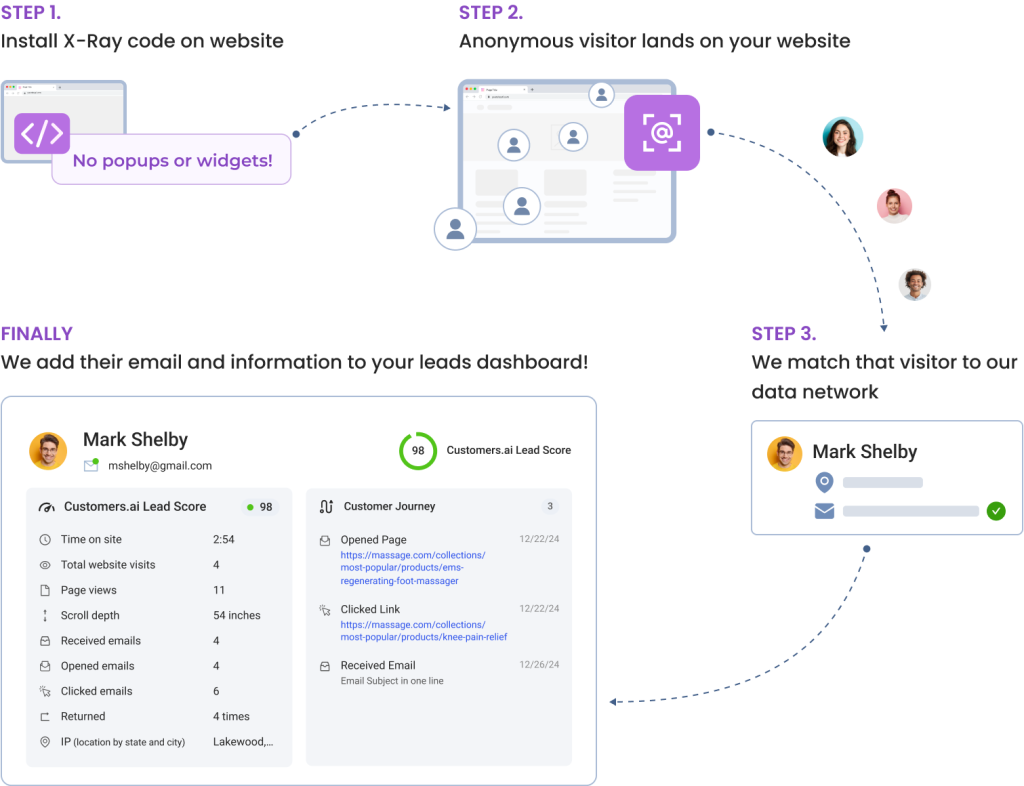
Why it matters:
Visitor ID tools work by capturing key information about visitors, such as their company details (linkedin profile, job title, company), personal details (name, email, address, income, interests) browsing behavior, and contact data (where available). This allows you to:
- Generate more leads: Identify potential customers who didn’t fill out a form or take action.
- Retarget effectively: Create personalized follow-up campaigns for visitors based on their behavior.
- Close sales faster: Pass detailed lead information to your sales team for timely outreach.
How to integrate visitor ID tools:
Use this checklist to ensure seamless implementation:
- Choose Your Tool: Select a visitor ID solution like Customers.ai.
- Integrate with CRM: Connect the tool to your CRM (e.g., HubSpot, Salesforce) to sync lead data automatically.
- Link with Analytics Platforms: Pair it with tools like Google Analytics to track visitor behavior alongside identification data.
- Customize Notifications: Set up alerts to notify your team when high-value leads visit your site.
- Test the Setup: Visit your website to confirm that the tool is capturing data accurately.
By activating a visitor identification tool, you ensure that no visitor slips through the cracks, making your campaign’s impact bigger and your pipeline stronger.
Learn more about how to set up a visitor identification tool with our guide, Website Visitor ID: The Ultimate Guide for DTC Marketers.
See the Visitors Hiding on Your Site
Book a demo of Customers.ai’s U.S. website visitor identification, customer journey insights and remarketing platform to skyrocket conversions and sales.
11. Don’t Take Any Chances: Test Everything Before Launch
Imagine spending weeks crafting the perfect campaign only to have a broken form or an unresponsive landing page derail your efforts.
Pre-launch testing is your safeguard against costly mistakes. By catching issues before your campaign goes live, you can avoid a rocky start and ensure a seamless experience for your audience.
Here’s your pre-launch testing checklist:
- Test All CTAs: Verify that every button, link, and call-to-action works as expected. Make sure users are directed to the correct pages or forms.
- Check Forms: Submit test entries to confirm that forms capture and deliver data correctly. Pay attention to error messages and submission confirmations.
- Review Landing Pages: Look for typos, broken images, and slow load times. Ensure the design matches your brand and guides users effectively.
- Mobile Responsiveness: Test your campaign assets across multiple devices (smartphones, tablets, and desktops). Over 50% of web traffic comes from mobile devices, so this step is critical.
- Verify Tracking Tools: Double-check that your analytics, pixels, and UTM tags are functioning properly. Run test conversions to ensure data is being recorded accurately.
Run small test campaigns:
Before going all-in, consider running a pilot test with a smaller audience. For example:
- Launch ads to a limited geographic area or specific segment of your audience.
- Monitor performance metrics like click-through rates (CTR) and conversion rates.
- Use the results to fine-tune messaging, visuals, or targeting.
Why it matters:
Pre-launch testing minimizes risks, ensures your tools and assets perform as expected, and gives your campaign the best chance for success.
Taking the time to troubleshoot now saves you from scrambling to fix problems after your audience has already seen them.
12. It’s Showtime: Launch Your Campaign with Impact
The big day is here and it’s time to bring your campaign to life!
A strong launch isn’t just about flipping the switch; it’s about delivering maximum impact and building momentum that keeps your audience engaged. To make it successful, you need to execute with precision and a clear plan.
Best practices for a winning launch:
- Timing Is Everything: Schedule your launch announcements at times when your audience is most active. For example, research shows that social media engagement often peaks mid-week and mid-morning.
- Coordinate Across Channels: Ensure your email blasts, social media posts, and paid ads go live in sync. Consistency reinforces your message and drives attention.
- Create Buzz Early: Tease your audience in the days leading up to the launch with countdowns, sneak peeks, or influencer collaborations.
Maintain momentum with staggered content:
Don’t let the excitement fizzle after launch day. Plan a staggered release schedule to keep the buzz alive. For example:
- Day 1: Announce your campaign with a strong CTA and launch-day incentives.
- Day 3: Share a behind-the-scenes look or a testimonial to build trust.
- Week 2: Highlight campaign milestones or user-generated content to reinforce social proof.
Monitor real-time performance:
Once your campaign is live, keep a close eye on analytics. Tools like Google Analytics, social media dashboards, and ad platforms will help you track:
- Traffic Spikes: Know when and where your audience is engaging most.
- Ad Performance: Adjust budgets or targeting if an ad is underperforming.
- Conversion Rates: Ensure that your CTAs and landing pages are turning visitors into leads or customers.
Showtime is your moment to shine so let’s make it count!
13. Spark Conversations: Engage With Your Audience
Launching your campaign is just the beginning. What comes next is building relationships.
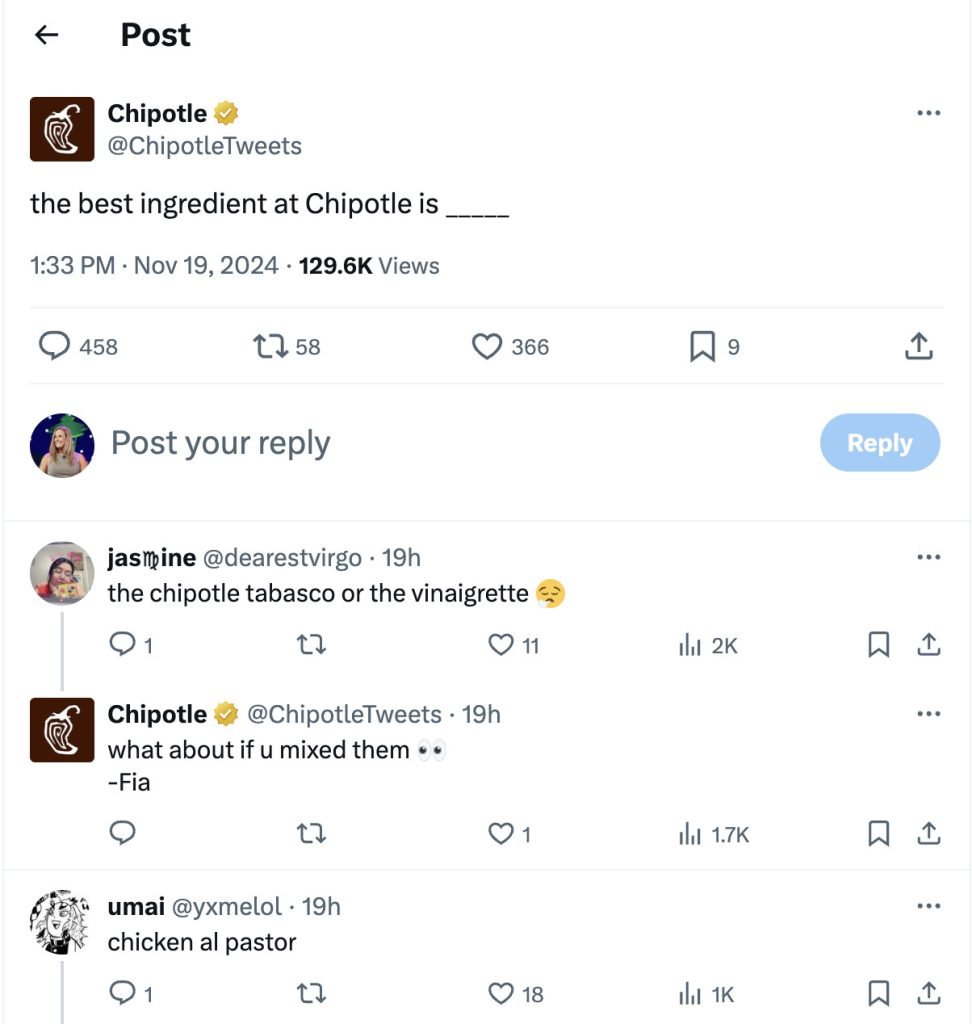
Engaging with your audience by responding to their comments, messages, and feedback shows them that you’re not just running a campaign, you’re creating a connection. Prompt and genuine engagement can turn casual followers into loyal advocates.
Why it matters:
Studies show that 79% of consumers expect a brand to respond within 24 hours on social media. Ignoring comments or delaying responses can leave a negative impression. On the other hand, timely replies make your audience feel valued and encourage deeper engagement.
Ways to keep the conversation going:
- Respond to Comments and Messages: Whether it’s a compliment, question, or criticism, show your audience you’re listening. Personalize your replies to make them feel heard.
- Run Live Q&A Sessions: Use platforms like Instagram Live or LinkedIn Live to interact with your audience in real-time. Answer their questions, share behind-the-scenes insights, and make it a two-way conversation.
- Share User-Generated Content (UGC): Encourage your audience to share their experiences with your product or campaign. Highlight their posts on your social channels to build community and trust.
Pro tip: Use engagement to collect insights. Pay attention to recurring questions or feedback themes. They could provide valuable ideas for refining your campaign or planning your next one.
14. Adapt and Thrive: Monitor and Optimize Post-Launch
Your campaign may be live, but the work is far from over. The post-launch phase is all about analyzing performance, refining your strategy, and making adjustments to ensure your efforts deliver maximum ROI.
The beauty of digital marketing is its flexibility. You can pivot quickly based on what’s working and what isn’t.
How to analyze performance metrics:
Start by diving into your campaign data to evaluate key metrics:
- Ad Performance: Look at click-through rates (CTR), cost per click (CPC), and conversion rates to identify which platforms or creatives are resonating most.
- Audience Insights: Are you reaching the right people? Tools like Google Analytics can reveal demographics, traffic sources, and user behavior.
- ROI: Compare the revenue generated against your campaign spend to assess profitability.
Refining your strategy:
Once you’ve analyzed the data, take action to optimize your results. Here are a few examples:
- Double Down on What Works: Increase ad spend on high-performing platforms or creatives to scale their success.
- Tweak Underperforming Content: Adjust headlines, CTAs, or visuals on ads or emails that aren’t driving conversions.
- Reallocate Resources: If one channel is underperforming, shift your focus to the platforms generating better results.
Why ongoing adjustments matter:
Marketing campaigns rarely go perfectly as planned, and that’s okay. The most successful campaigns thrive because marketers stay agile, continuously learning and improving as they go. Regular optimization keeps your campaign fresh and relevant to your audience.
15. Learn and Level Up: Analyze, Reflect, and Plan Next Moves
Every marketing campaign is an opportunity to grow and improve. Once your campaign wraps up, it’s time to take a step back and evaluate its overall success.

This reflective phase is where you’ll uncover insights that can make your future campaigns even stronger.
How to evaluate your campaign:
Start by gathering your team for a post-campaign analysis. Use detailed performance reports to guide your discussion, and encourage open feedback about what worked and what didn’t. A structured approach will ensure no stone is left unturned.
Questions to ask during your evaluation:
- What worked well? Identify the strategies, channels, or creatives that exceeded expectations.
- What could be improved? Pinpoint areas where performance fell short and discuss potential reasons.
- Were goals met, and why or why not? Compare your actual results with your original goals to see if your strategy aligned with your objectives.
Turning insights into action:
Use the lessons from your analysis to refine your marketing campaign checklist for the future. For example:
- If social media engagement was a standout success, consider allocating more resources to those platforms next time.
- If tracking tools weren’t set up properly, prioritize earlier testing in your next campaign’s timeline.
- If your team struggled with coordination, explore project management tools to streamline collaboration.
Campaigns are about building a foundation for smarter, more effective marketing in the future. By learning from your wins and missteps, you’ll not only level up your next campaign but also create a culture of continuous improvement.
The best campaigns are never “one and done.” Take what you’ve learned, refine your approach, and keep pushing for better.
From Shark Tank to Success: Your Campaign Game Plan
Just like our Shark Tank client who made a strategic move to capture their traffic with the Customers.ai visitor ID pixel, your marketing campaign can be a resounding success with the right preparation.
This 15-step checklist ensures that every detail, big or small, is accounted for, so you can confidently launch your campaign knowing it’s set up for greatness.

Whether you’re preparing for a surge of interest from a major promo or rolling out a targeted campaign, this checklist is designed to be your go-to guide. It’s flexible, practical, and works for businesses of all sizes and campaign types.
From the first spark of an idea to analyzing post-launch performance, these steps will help you stay organized and make the most of every opportunity.
Ready to make your next campaign unforgettable? Sign up for a free trial of Customers.ai and make sure you don’t miss a single lead from your campaign launch.

See Who Is On Your Site Right Now!
Get names, emails, phone numbers & more.
Try it Free, No Credit Card Required
Important Next Steps
- See what targeted outbound marketing is all about. Capture and engage your first 500 website visitor leads with Customers.ai X-Ray website visitor identification for free.
- Talk and learn about sales outreach automation with other growth enthusiasts. Join Customers.ai Island, our Facebook group of 40K marketers and entrepreneurs who are ready to support you.
- Advance your marketing performance with Sales Outreach School, a free tutorial and training area for sales pros and marketers.
Marketing Campaign Checklist FAQs
1. What should a marketing campaign checklist include?
A marketing campaign checklist should cover every phase, from planning to execution and analysis. Key steps include defining campaign goals, researching your audience, setting a budget, selecting channels, and designing creative assets. Post-launch, include tracking analytics and optimizing for better results.
2. How does a checklist improve campaign efficiency?
Checklists keep your team organized and ensure no steps are overlooked. Research shows that checklists improve task completion rates by over 20%. By mapping out each stage, you save time, reduce errors, and boost your campaign’s chances of success.
3. How do you measure the success of a marketing campaign?
Success is measured by tracking KPIs like click-through rates (CTR), conversion rates, and ROI. A solid checklist includes tools like Google Analytics and CRM integrations to monitor these metrics. Adjustments based on real-time data further enhance performance.
4. What tools should I include in my marketing campaign checklist?
Essential tools include:
- Google Analytics: For website traffic and behavior analysis.
- Hootsuite: To schedule and manage social media posts.
- UTM Builders: To track campaign performance across channels.
Using these tools ensures you capture actionable insights throughout your campaign.
5. How can I ensure my marketing campaign stays on budget?
Start by creating a detailed budget that includes ad spend, creative production, and tracking tools. Regularly monitor expenses and reallocate funds to high-performing channels. Including budget-tracking software in your checklist helps avoid overspending.
6. What is a PR checklist, and why is it important?
A PR checklist ensures your public relations efforts are organized and effective. It includes creating press releases, preparing media kits, and identifying key media outlets. This approach maximizes your reach and ensures consistent messaging across channels.
7. What are the key elements of a PR checklist?
Your PR checklist should include:
- Press Release Drafting: Ensure your message is clear and newsworthy.
- Media Kit Preparation: Include logos, bios, and product images.
- Media Contact List: Identify relevant journalists and publications.
- Crisis Communication Plan: Prepare responses for potential PR challenges.
This structure ensures you’re prepared for any scenario.
8. How do you build a media contact list?
Research publications and journalists covering your industry or niche. Use tools like Muck Rack or LinkedIn to find their contact information. Organize them by priority and tailor your pitches to each contact for higher engagement.
9. How can social media amplify PR efforts?
Social media amplifies PR by enabling real-time sharing of press releases and news. Platforms like Twitter and LinkedIn are especially useful for reaching journalists and industry professionals. Studies show that 69% of journalists use social media for story leads, making it a critical part of your PR checklist.
10. When should a PR campaign be evaluated?
Evaluate a PR campaign immediately after launch and periodically during its lifecycle. Use metrics like media coverage, website traffic spikes, and sentiment analysis. This data helps refine future campaigns and measure ROI effectively.
11. What is a product launch checklist?
A product launch checklist is a step-by-step guide to introducing a new product to the market. It covers everything from market research and branding to marketing and distribution plans. Following a checklist ensures a seamless launch and maximizes your product’s visibility.
12. What should be included in a product launch checklist?
Key steps in a product launch checklist include:
- Market Research: Identify target audiences and competitors.
- Product Positioning: Define your unique value proposition (UVP).
- Launch Timeline: Schedule pre-launch, launch-day, and post-launch activities.
- Channel Strategy: Plan ads, email campaigns, and social media posts.
This ensures all elements work together for a cohesive launch.
13. How do you create buzz before a product launch?
Create anticipation with teaser campaigns, influencer collaborations, and exclusive pre-launch offers. Platforms like Instagram and TikTok are ideal for building excitement. Offering early access or behind-the-scenes content can also boost engagement.
14. How do you measure the success of a product launch?
Track metrics like sales, website traffic, and social media engagement. Surveys and feedback forms can also help gauge customer sentiment. A comprehensive checklist ensures you track these metrics from day one.
15. Why is audience segmentation important for product launches?
Audience segmentation helps you tailor your messaging to different customer groups. For example, tech-savvy users might prefer detailed specs, while casual buyers might need a simple overview. This approach increases relevance and conversion rates.
16. What is a product marketing checklist?
A product marketing checklist ensures all promotional efforts align with your product’s value and target audience. It includes crafting messaging, planning campaigns, and tracking results. This framework is essential for positioning your product effectively in the market.
17. How do you align product marketing with sales goals?
Collaborate with sales teams to understand their targets and pain points. Use this insight to create marketing materials like brochures, pitch decks, and case studies. A checklist ensures marketing and sales are working toward shared objectives.
18. What role does customer feedback play in product marketing?
Customer feedback helps refine your messaging and product positioning. Include regular surveys and reviews in your checklist to gather insights. 86% of buyers say they’re more likely to trust a brand with visible customer reviews.
19. How do you optimize product marketing campaigns?
Use analytics to identify what’s working and refine your approach. For example:
- Scale campaigns on high-performing channels.
- Revise messaging that isn’t resonating.
- Test new formats like videos or interactive content.
Ongoing optimization ensures better results.
20. Why is brand consistency critical in product marketing?
Brand consistency builds trust and recognition. Use a style guide to ensure all messaging, visuals, and campaigns align with your brand’s identity. A consistent approach increases customer confidence and loyalty.
